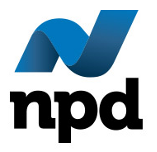Few Connected Device Owners Rent iVOD Movies . . . At Least for Now
Thursday, December 15th, 2011
Although iVOD receives category-leading scores for selection, search, and navigation, it still has not caught on with the majority of mainstream consumers
PORT WASHINGTON, N.Y. — According to The NPD Group, a leading market research company, even with the increasing number of iVOD-capable devices — which includes Internet-connected TVs, next-generation gaming consoles, streaming-media players, tablets, and smartphones — the vast majority of these devices were not used to rent iVOD movies. Only 5 percent of the 134 million U.S. consumers who own iVOD-capable devices used them to do so. Even among owners of dedicated streaming media devices, only 14 percent reported making an iVOD rental transaction.
NPD’s “Movie VOD Monitor” report defines iVOD movie rentals as movies that are rented from the following services: Apple iTunes, Microsoft Zune, Sony PlayStation Network, Amazon Instant Video, Vudu, Best Buy CinemaNow, and Bockbuster.com. Movie purchases or downloads that are permanently owned were not included in NPD’s report. Netflix is classified in NPD’s report as a subscription streaming service, not iVOD.
Although iVOD receives category-leading scores for selection, search, and navigation, it still has not caught on with the majority of mainstream consumers. iVOD may also be struggling due to heavy competition from pay TV operator’s VOD offerings, and subscription movie options, including Netflix. In fact, 56 percent of iVOD movie renters are also Netflix subscribers and 43 percent use their pay TV provider’s movie VOD offering.
“The industry is teeing up excellent services for Internet movie rental, but they simply aren’t getting noticed by many consumers,” said Russ Crupnick, senior vice president, industry analysis for The NPD Group. “It’s understandable that smartphone owners might be hesitant to watch a full-length movie with limited screens and battery life, but few of the other connected devices are showing strong uptake for iVOD, either.”
“The various connected devices needed to enable iVOD are already found in enough households to allow this distribution channel to grow well beyond early adopters,” Crupnick continued. “To move the needle forward, though, iVOD providers must now leverage their content selection and search advantages and perhaps take a page out of Netflix’s playbook by offering more free trials to introduce potential users to their services.”
Methodology: NPD’s “Movie VOD Monitor” evaluates the impact the convergence of iVOD and pay TV VOD has on programming and pricing. Information in the report was derived from 11,024 VOD transactions from NPD’s VideoWatch Digital tracking service and 9,636 completed consumer surveys in “Entertainment Trends in America” report. All data in both studies is weighted and projected to reflect the U.S. population age 13 and older.
Latest News
- Tata Motors selects HARMAN Automotive's in-vehicle app store
- Media Distillery to power Swisscom ad-free replay product
- MagentaTV strengthens addressable TV business with Equativ
- Deutsche Telekom selects Broadpeak Cloud DVR solution for MagentaTV
- Nexxen empowers Australian advertisers using VIDAA ACR data
- TargetVideo integrates AI for video content categorization